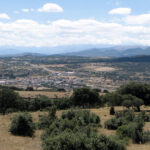The consumption of Iberian pork has undergone a remarkable transformation in recent decades, marked by changes in eating habits, increased awareness of the quality of the product and the opening up of international markets.
In the past, Iberian products were mainly consumed in the producing regions, in traditional and family contexts. Iberian ham, chorizo and pork loin were products linked to celebrations or more seasonal consumption. However, from the 1990s onwards, the growth of interest in quality gastronomy and the appreciation of local products boosted their presence on the national market.
Trough of carne ibérica
This boom was accompanied by an improvement in the production, curing and certification processes, which made it possible to guarantee the authenticity of the product and its traceability. Today’s consumers are looking for healthier and more natural foods, and the Iberian pig, reared in the wild and fed in many cases with acorns and natural resources from the dehesa, has positioned itself as a food with high nutritional and organoleptic value.
The professionalisation of the sector, the work of the cooperatives and the development of more efficient distribution channels have made it possible for these products to be found today in large supermarkets and specialised shops throughout the country.
International recognition
At the same time, the international recognition of Iberian ham as one of the star products of Spanish gastronomy has opened up new opportunities in markets such as Europe, Asia and America, where consumption has grown progressively, favouring the expansion of traditional brands.
Symbol of identity
Today, the Iberian pig not only remains a symbol of gastronomic identity, but continues to gain ground as an essential part of the diet of those who value quality, origin and flavour.





